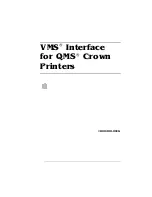
ADOBE CONTRIBUTE CS3
User Guide
37
For more information about the settings, see “Settings for user roles” on page 34.
8
When you finish defining the role, click OK to save your changes.
The Role dialog box closes, returning you to the Administer Website dialog box.
9
To create additional roles, repeat steps 4 through 7 for each role you want to add.
10
Select another administrative category to modify, or click Close to apply your changes and exit the Administer
Website dialog box.
Note:
You can modify a role’s settings at any time, even after you have distributed a connection key. Connection infor-
mation and website permissions are maintained separately.
11
To modify the roles you have created, select the role whose settings you want to modify and click Edit Role
Settings. The Role dialog box appears.
12
Click Close to close the Define Roles dialog box, and then click Close to close the Administer Website
dialog box.
Next, you will configure CPS. If you are not using CPS to manage your website, then you are ready for user to install
Contribute and connect to the website. For more information, see “Deploying Contribute and website connections”
on page 46.
Configuring Contribute Publishing Server (CPS only)
If you are using Contribute Publishing Server (CPS) with Contribute, it’s important to configure the User Directory
service when you deploy. User Directory service is a user management solution that lets you integrate Contribute
with your organization’s user directory to easily manage and authenticate users.
You can also configure the E-mail Notification and Log services at the same time, or you can wait until later. At a
later time you will probably also want to set up Simple File Deployment service and RSS Feed service. For more
information, see Contribute Publishing Server Help.
Before you configure the User Directory service, you should understand the two authentication models available,
and how Contribute works with LDAP and what the LDAP authentication workflow is.
Understanding Contribute user authentication models
Contribute provides two user authentication models that you can use:
File-based authentication
lets you use either a password stored in an XML file, or Windows domain authentication.
When using the Contribute file-based authentication system, CPS looks up the user’s credentials in an XML file
located on the server.
When using Windows domain authentication, CPS validates the user’s identity against the Windows domain in
which CPS operates.
Note:
Windows domain authentication uses the winNT.dll library for authentication. You must ensure that this file’s
path (usually c:\windows\system32) is placed in the java.library.path environment variable.
User directory service-based authentication
lets you integrate Contribute with user directory services such as
Lightweight Directory Access Protocol (LDAP) or Active Directory.
















































